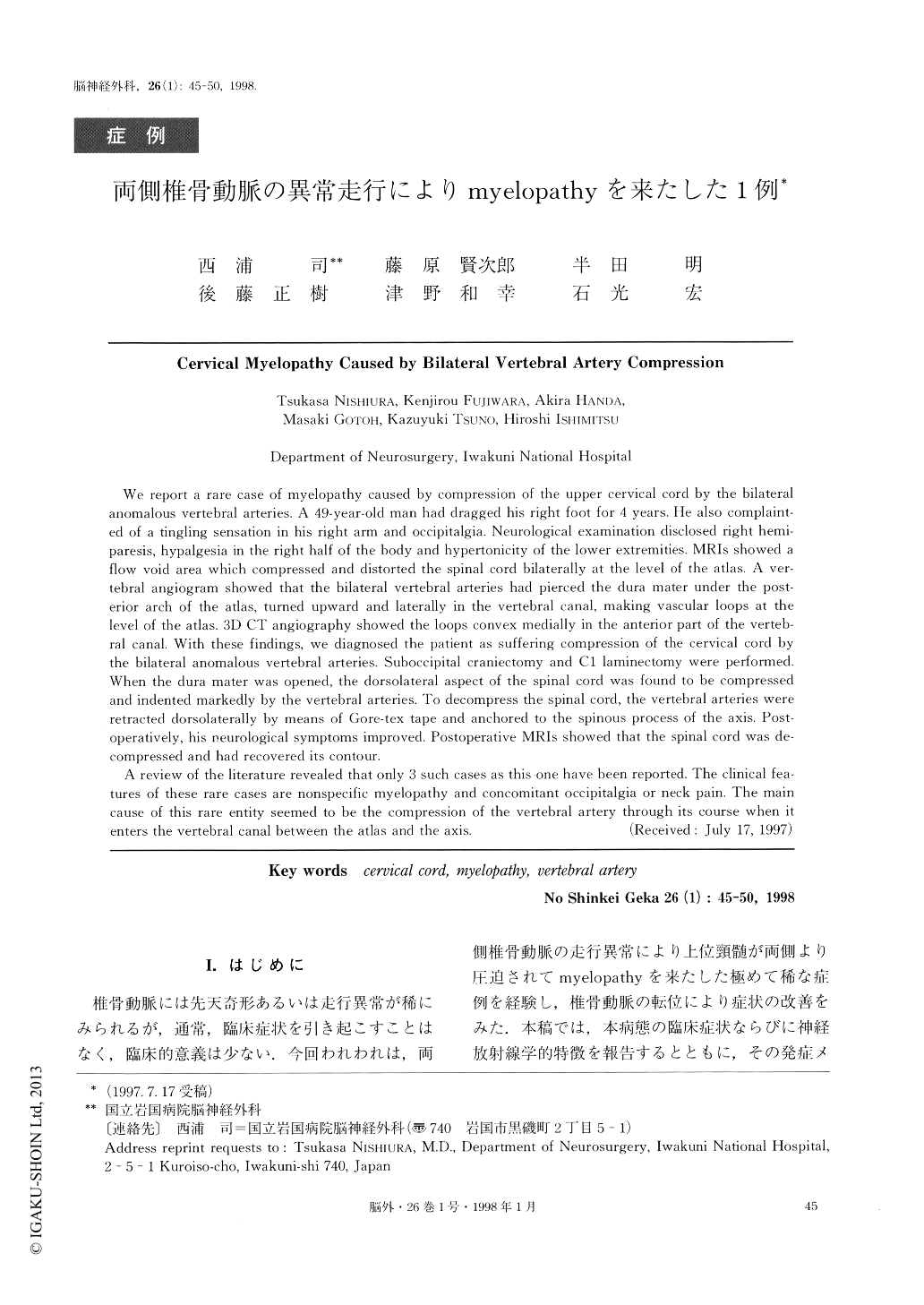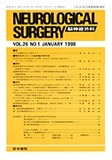Japanese
English
- 有料閲覧
- Abstract 文献概要
- 1ページ目 Look Inside
I.はじめに
椎骨動脈には先天奇形あるいは走行異常が稀にみられるが,通常,臨床症状を引き起こすことはなく,臨床的意義は少ない.今回われわれは,両側椎骨動脈の走行異常により上位頸髄が両側より圧迫されてmyelopathyを来たした極めて稀な症例を経験し,椎骨動脈の転位により症状の改善をみた.本稿では,本病態の臨床症状ならびに神経放射線学的特徴を報告するとともに,その発症メカニズムについて考察したので併せて報告する.
We report a rare case of myelopathy caused by compression of the upper cervical cord by the bilateralanomalous vertebral arteries. A 49-year-old man had dragged his right foot for 4 years. He also complaint-ed of a tingling sensation in his right arm and occipitalgia. Neurological examination disclosed right hemi-paresis, hypalgesia in the right half of the body and hypertonicity of the lower extremities. MRIs showed aflow void area which compressed and distorted the spinal cord bilaterally at the level of the atlas. A ver-tebral angiogram showed that the bilateral vertebral arteries had pierced the dura mater under the post-erior arch of the atlas, turned upward and laterally in the vertebral canal, making vascular loops at thelevel of the atlas. 3D CT angiography showed the loops convex medially in the anterior part of the verteb-ral canal. With these findings, we diagnosed the patient as suffering compression of the cervical cord bythe bilateral anomalous vertebral arteries. Suboccipital craniectomy and CI laminectomy were performed.When the dura mater was opened, the dorsolateral aspect of the spinal cord was found to be compressedand indented markedly by the vertebral arteries. To decompress the spinal cord, the vertebral arteries wereretracted dorsolaterally by means of Gore-tex tape and anchored to the spinous process of the axis. Post-operatively, his neurological symptoms improved. Postoperative MRIs showed that the spinal cord was de-compressed and had recovered its contour.
A review of the literature revealed that only 3 such cases as this one have been reported. The clinical fea-tures of these rare cases are nonspecific myelopathy and concomitant occipitalgia or neck pain. The maincause of this rare entity seemed to be the compression of the vertebral artery through its course when itenters the vertebral canal between the atlas and the axis.

Copyright © 1998, Igaku-Shoin Ltd. All rights reserved.


